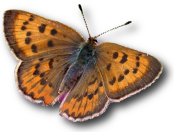 Art Shapiro's Butterfly Site
Art Shapiro's Butterfly Site
Monitoring butterfly populations across Central California for more than 35 years… Educational Modules
The Lepidopteran Detective
This educational module provides the opportunity to learn concepts and biological terms in an interactive manner. The butterfly website becomes the search area, as students explore it to discover the name of their mystery butterfly. Once they figure out it’s name, they must describe the Linnaean system, and what it represents. By searching the website, the students are then asked to answer questions about the locations the butterfly has been found at, whether it is resident (and what that means) at those sites, what are its host plants, how many generations are in a single year, if its associated with human disturbance, and whether the life history characteristics of the butterfly change across sites or not. By completing this module, students get an introduction to some basic biological concepts, and get to see how those concepts are used in analyzing field-derived data on butterflies.
Lepidopteran Statistics I
This module uses the field data collected over 34 years to introduce students to some basic elements of statistics. Queries set up within the educational module permit the students to generate measures of central tendency- mean, median and mode. The queries also permit generation of histograms, ogive, and pie charts. Since these questions are set in the context of butterfly populations and species richness, the students get to develop practical, applied biological versions of these descriptive metrics.
Lepidopteran Statistics II
The purpose of this module is to learn some advanced statistical techniques, starting with scatter plots and line graphs, which are the prerequisites to performing linear regression on a data set. The module introduces these concepts in the context of thinking about the response of butterflies to climate change. Students examine and create scatter plots that explore the relationship between timing of first observation and year of observation for a butterfly. They then do a similar exercise to look for trends in weather at a given site. They are then asked to create a scatter plot that combines the weather and phenology patterns they have seen. The module concludes with questions about interpretation of the graphs they have created.